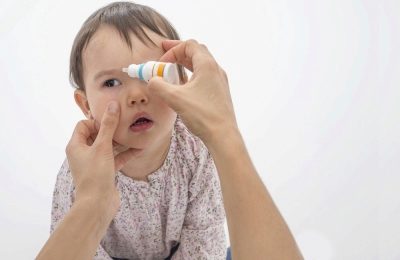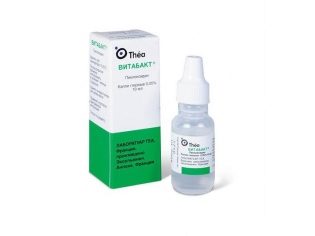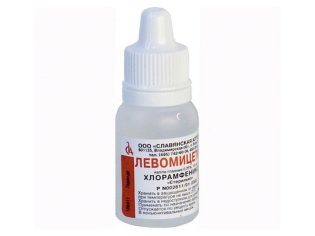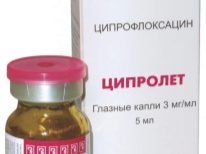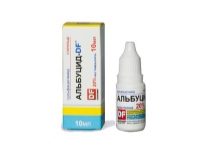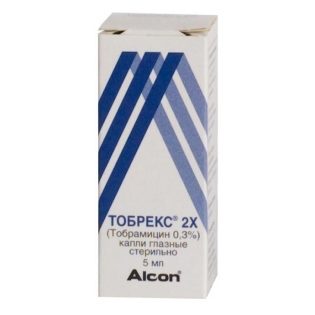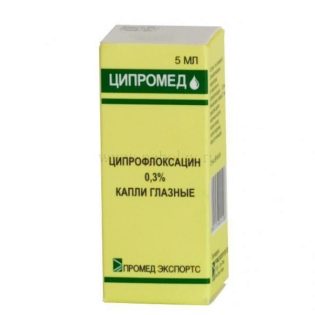Antibiotic eye drops for children
Redness and eye contamination, “barley” that appeared on the inside or outside of the eyelids are unpleasant symptoms of disturbances in the child’s body. Inflammation of the mucous membrane of the eyes (conjunctivitis), inflammation in the ciliary edge (blepharitis), inflammation of the glands of the cartilage of the eyelid (meibomitis) and many other diagnoses usually imply antibiotic treatment.
The basis of this treatment can be antimicrobial agents of local action - drops, ointments, gels. Can, but not necessarily will. What eye drops can be used in children?
Antibiotics - do I need to drip?
All antibiotics, as their name implies, exist to resist bacteria, germs, and rods. If eye inflammation in a child is caused by a viral infection, antibiotics do not need to be dripped. They will not be able to help, because do not know how to fight viruses. But they can hurt, because no one has yet canceled serious side effects of antibacterial therapy. And this is both dysbacteriosis, and thrush, and reduced immunity.
In adults, eye inflammation is almost always caused by viruses. But in children it is different - the share of viral diseases is equal to the share of bacterial.
The little ones are actively discovering the world, everyone is trying to touch their hands, and then they rub their eyes with these hands ... As a result, the bacteria penetrate the beneficial moist and warm environment - the human eye, and the inflammatory process begins.
Even if the baby was initially sick with the flu or ARVIhis conjunctivitis may also become a bacterial complication of a viral infection. To the body weakened by the flu, all kinds of harmful bacteria usually “stick” quite readily and quickly.
So, the most common children's eye diseases, which can be prescribed antibiotic therapy:
- Conjunctivitis (chlamydial, bacterial).
- Blepharitis (capillary, ulcerative).
- Keratitis (bacterial).
- Trachoma (Chlamydia).
These and other eye ailments in children are usually provoked by Koch-Wicks wand, pneumococci, staphylococci, streptococci, atypical chlamydia.
Treatment
From conjunctivitis. Inflammation of the mucous membrane of the eye is a frequent companion of colds. If it was bacteria that caused the disease, not viruses, enteroviruses or allergens, then antibiotic drops will be the main component of the treatment regimen. Bacterial inflammation is easy to recognize - by purulent secretions of gray-green color from the corner of the eye, cilia stick together, the eye becomes clouded.
Conjunctivitis can pass by itself, without specific treatment. But any doctor will tell you that the healing process will go much faster if you start applying drops with antibiotics.
From blepharitis. If the cause of inflammation of the ciliary edge lies in the reproduction of bacteria, the doctor will also advise antibiotics. Most often, these are complex drops, which will include erythromycin, tetracycline, gentamicin.
From barley. This acute suppurative inflammation of the hair ciliary sac usually provokes Staphylococcus aureus. As soon as moms do not treat barley to their children! And a boiled egg, and a burdock compress, and grandmother's plots ... The doctor is unlikely to advise you at least one of the above. A medical approach to the disease will be easier - drops or ointment with antibiotics.After all, the usual barley often ends with inflammation of the orbit, brain membrane and surgery. Especially if the boil is heated or wetted.
From keratitis. Inflammation of the cornea is most often caused by staphylococcus and the pyocyanic stick. For treatment, doctors strongly recommend taking antibiotics "Levofloxacin"," Moxifloxacin ".
Advantages of antimicrobial drops
By burrowing an antibiotic into the sore eye, we reduce the burden on the children's body. After all, active antimicrobial substances begin their "work" immediately. The antibiotic passes the gastrointestinal tract, minimizes the risk of dysbiosis and allergies.
For the treatment of viral inflammation of the eye, the doctor will prescribe separate or complex drops with antiviral effect, with an anti-inflammatory drug or with hormones, and for allergic eye inflammation - drops with dexamethasone.
Preparations for eye inflammation
- «Levomycetin». An antibiotic solution of 0.25% is effective against various bacteria of the “cocci” type and infectious bacilli (hemophilic, pseudomonas, intestinal, etc.). Conjunctivitis and other purulent inflammation of the eyes with this drug can be treated in children of any age. Drops of "Levomitsetin" are contraindicated in babies with liver and kidney diseases and fungal skin diseases. According to parents, "Levomycetin"- the best drug for the combination of" effect-price. "
- «Vitabact». These antibacterial drops in a concentration of 0.05% can be used for conjunctivitis and blepharitis in infants, preschoolers, adolescents and adults. They are sold in a fairly convenient package, which allows you to bury the drug without the use of a pipette.
- «Ciprofloxacin». These are multifunctional drops with an antibiotic concentration of 0.3%. They can be used not only for the treatment of inflammation of the skin of the eyes, but also for nasal application, as well as to drip into the ears. The antibiotic has a huge list of contraindications and side effects, it can have a negative impact on the skeleton of a growing person, and therefore children under 16 years old are trying not to prescribe it. As an exception, a doctor may prescribe this remedy to a child in very difficult conditions.
- «Tsiprolet». Eye drops with an antibiotic of a universal (wide) spectrum of action. The concentration of the antimicrobial substance is 3 mg per 1 milliliter of solution. The drug is also recommended by the manufacturer to children from 16 years of age, at the age of younger - the appropriateness of the reception is determined by the doctor.
- «Albucid». Drops of 20% aqueous solution of sulfacetamide (sodium sulfacyl) can be instilled into the eyes of even newborn children. Side effects - a minimum and they are local in nature (redness, itching, watery eyes).
- «Tobrex». These are eye drops for children with a broad-spectrum antibiotic (tobramycin). These drops are prescribed for blepharitis, keratitis for children of any age.
- «Cypromed». These antimicrobial eye drops are not prescribed to children under 1 year. All other babies “Tsipromed” can be prescribed for conjunctivitis, blepharitis, inflammation of the lacrimal sac, with multiple barley.
Instructions for use
- When applying eye drops, the eyelashes must first be cleaned of pus. For this purpose, furatsilina solution is used.
- Drops should be warm, pre-warmed in their hands, should be instilled out of the child with care.
An ophthalmologist tells us how to properly drop eye drops in children:
Drops for children up to a year
In infants, eye inflammation occurs quite often, and the bacteria from the handles with which the crumbs rub the eyes, and microtrauma are to blame. Children under 1 year recommended drops with the following names: "Vitabact», «Levomycetin», «Albucid», «Tobrex».





